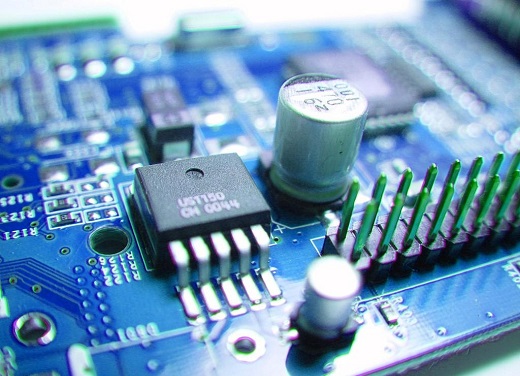In FPC production, molding is the process before quality inspection and packaging, and it is also the last process in the manufacturing process. The shape of FPC is different, either square, or round, or long, or tapered, or regular or irregular. In order to make the appearance of each product uniform, beautiful, standard, and meet the design requirements, the FPC molding method generally chooses die-punch molding, cutting molding, and manual molding. Choose different molding methods according to the quantity, precision, and delivery time required by customers.
First, let's introduce die punching. The main body of die punching is a mold, and different FPC products require different molds.
The molds are divided into materials, including steel molds and knife molds. The steel mold is made of steel, with high precision, many stamping times and not easy to deform. It is the most commonly used mold. Because of its heavy weight, it often needs to be moved during installation and the cost is high. Therefore,

steel molds are generally not made too much. Large, suitable for FPC punching with a veneer size of 600mm or less; the die is light in weight and low in cost. It is made of wood and steel blades. The accuracy is not high. Generally, it is only suitable for products and accessories that do not have strict requirements on shape accuracy., Such as reinforcing piece, etc. (The knife mold will not be discussed in the follow-up, and the mold mentioned refers to the metal steel mold).
According to the accuracy, there are precision molds, ordinary molds, and simple molds. This involves three production methods of molds, slow-moving, medium-moving, and fast-moving. The mold made by slow-moving is a precision mold. The precision tolerance is ±0.05mm, the steel quality is good, not easy to deform, but the price is high, and the production time is long. Unless the customer has special requirements for the shape accuracy of ±0.05mm, this kind of mold is generally not used; it is made by middle wire The mold is an ordinary mold with a precision tolerance of ±0.10mm. The accuracy can meet most of the needs. The price is moderate and the performance is stable. It is the type of mold that is usually selected. The mold made by fast-moving wire is a simple mold with accuracy. At ±0.2mm, the price is slightly cheaper than ordinary molds. Generally, this kind of mold opening method is selected for products with low outline tolerance;
The steel mold is composed of an upper mold and a lower mold, the lower mold is the base, and the upper mold is the punching die. After the mold is installed on the punching machine, the punching height of the mold needs to be adjusted with a test plate to select the most suitable punching force to ensure that the FPC can be cut according to the shape design drawing, and the other parts of the FPC that do not need to be punched are not damaged. According to the size of the FPC, the mold is often produced in one way, that is, multiple pieces of FPC are formed by stamping once, thereby improving production efficiency. In the production process, without changing the FPC shape design, the mold only needs to be made once, and it can be recycled later, which is suitable for mass production and reduces the unit production cost.
Secondly, it is cutting and forming, which is generally only used for the production of samples and very small batches. Cutting molding includes CNC knife cutting molding and laser molding. CNC knife cutting, input the cutting diagram into the computer, press the positioning hole to fix the FPC imposition on the equipment, and the cutting head on the equipment moves according to the line of the drawing, thereby cutting the FPC into the specified shape. This kind of cutting method, because the blade itself is relatively large, and the cutter head is easy to damage, the precision of the processed FPC is poor, the processing time is long, and the depth is improperly adjusted, which will cause many burrs and impenetrable cutting. Before it appeared, it was generally only used for cutting and forming FPC samples, protective films, and electromagnetic films. With the popularity of laser cutting machines, because of its high accuracy (≤0.05mm), the cutting surface is round and square, with less burrs, and the speed is faster than knife cutting, therefore, CNC knife cutting has been replaced. Nowadays, most FPC samples are produced in this way. It should be noted that because laser cutting uses high-energy red/ultraviolet beam processing, there may be burn marks on the cutting surface. After the production is completed, it does not affect the appearance. It is best to use a dust-free cloth to wipe with alcohol.
Finally, it is manual molding, that is, manual molding with scissors, knife and pen. Only a few products that do not require shape accuracy will use this method.
The above are several ways of FPC molding, as well as their respective advantages and disadvantages and the environment in which they are used.